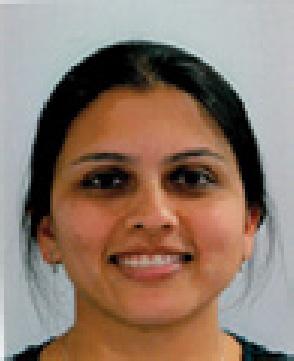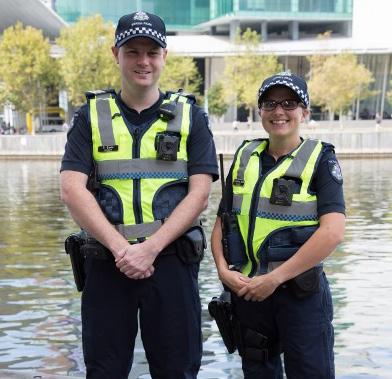
4 minute read
Architects of the Asian century
from 2018-05 Adelaide
by Indian Link
BY
COORDINATOR
Jabbal
CONTRIBUTORS
Mital Parekh, Vinaya Rai, Mohan Dhall, LP Ayer, Chitra Sudarshan, Dhanya Samuel, Minal Khona
ADVERTISING MANAGER
Sukesh Thapliyal 0410 578 146
ADVERTISING ASSISTANT
Charuta Joshi 02 9279 2004

Indian Link is a fortnightly newspaper published in English. No material, including advertisements designed by Indian Link, may be reproduced in part or in whole without the written consent of the editor. Opinions carried in Indian Link are those of the writers and not necessarily endorsed by Indian Link. All correspondence should be addressed to:
INDIAN LINK MEDIA GROUP
Level 24/44 Market St, Sydney 2000
GPO Box 108, Sydney 2001
Ph: 02 9279-2004 Fax: 02 9279-2005
Email: info@indianlink.com.au
While the eyes of the world were on the historic meeting between North Korean leader Kim Jong Un and his South Korean counterpart President Moon Jae-in, an equally important meeting was taking place a few thousand kilometres away between Indian Prime Minister Narendra Modi and Chinese President Xi Jinping.
A meeting such as this would have been inconceivable only a year ago, as the two nuclear nations faced a flashpoint at the Sino Bhutanese border. Yet in the rapidly changing world order, equations between friends and enemies can alter overnight. Whether this meeting was a ploy playing on the old adage of keep-your-friends-close-butyour-enemies-closer, only time will tell. But for the moment, it seems both leaders are content in resetting the gears to neutral.
Both have their reasons for doing so.
Prime Minister Modi has an election coming up in 2019 and while jingoism plays well to stir up nationalistic fervour, an armed confrontation could raise questions about leadership. Economically, while India seems to be clicking away at a GDP growth of high 6 - low 7%, the country is still working through the hangover following demonetisation, and settling in the Goods and Services Tax introduced recently.
India needs time to consolidate its internal economy and move more rapidly towards industrialisation and infrastructure development. India has also been more reliant on its nonaligned policies, which historically have seen it balance its allegiances towards both the United States and Russia. But with Russia enjoying a good relationship with China, and with the US under President Trump becoming more unpredictable, India needs to forge its own way forward on its relationship with China. It has also been widely reported that China was taken aback at the aggression and resolve that India showed in its 72-day stando ith the hinese army at on Lang or Doklam. Experts have said that for the first time China shifted its focus from regarding Japan (after the US) to be its second most dangerous adversary.
Yin Guoming, a Chinese foreign a airs ana yst rote, hina needs to re-assess, re-examine, and reformulate its India strategy.”
Having an informal meeting with Prime Minister Modi was the Chinese President’s way of resetting the relationship dial back to baseline.
Besides, the matter of trade and commerce between the two countries is also strong, and it is in China’s interest to make it grow.
For example, bilateral trade between the two countries in 1988 was only $107.96 million; in 2017 the total trade reached $84.44 billion, rising 18.5% from $71.2 billion in 2016.
With major threats of a trade war coming from the US, China needs to keep its options for world markets open.
No doubt people of Indian origin watched the handshake between the two Korean leaders and wondered whether they would ever see such a thawing of relations with neighbouring Pakistan.
The two Koreas were born after World War II in 1945, just before the division of India took place. It has taken 73 years for the two Koreas to start reaching out. But perhaps the dynamics are di erent between India and Pakistan.
Religion, cross border terrorism and generations raised on a diet of hate-anddestroy propaganda - besides the deeply entrenched political opportunism - may make this a bridge too far.
BODY WORN CAMERAS: BOON OR BANE?
Victoria Police recently started trialling body worn cameras (BWC) to see if they improve the Victorian policing environment. The cameras will record video and audio evidence and ultimately, increase transparency in interactions between the police and the public.

The ip side to the new development is the obvious question of privacy of citizens. PREETI JABBAL asked Melbournians what they thought about BWCs.
Dipanjali Rao wrote: I think cameras are a good idea in terms of police accountability, especially in light of the recent incident with Melbourne police where they ill-treated a man with a disability. However, cameras and technology alone cannot be responsible for accountability. There has to be a structural support in place that independently investigates police behaviour. Police investigating their own, as it currently stands, compromises justice. Technology is a critical tool to ensure accountability, but it needs to be supported by cultural change and by independent bodies that investigate misdemeanour and abuse.
Amit Dutt wrote: Any new technology has its pros and cons. In this case, the advantages are that there would be complete transparency and a huge boost to public relations for Vic Police. But some doubts are bound to be raised, like loss of privacy and how the recorded information is subsequently used. The biggest advantage is the objectivity these cameras will ensure because they will take away any subjective interpretation. Still, one can’t be sure. The proof will be in the pudding and it all depends on how they implement these cameras.
Dr Ritesh Chugh wrote: It is a welcome move for collecting evidence. These devices can also potentially enhance the safety of police of cers and possibly deter potential offenders. In cases of police misconduct, the recordings from these devices can also be used to determine accountability. It is important though that all the appropriate information is communicated, in its entirety, to stakeholders.
Naishadh Gadani wrote: I am in favour of BWCs. They will enhance transparency and accountability. They’ll also help the community to learn what really goes on during police operations.
Rakesh Raizada wrote: I think it’s a great idea. Given the number of road accidents that occur nowadays, these cameras are a great tool for the cops while they undertake an alcohol or drug test, or even conduct vehicle stops. BWCs can be as credible a source of evidence as dash-cam videos, particularly in cases of family violence.
I do hope, though, that they don’t lead to misuse of power. Like, what if police deliberately don’t turn on their camera?
Storage of data and dealing with privacy issues should be thought through, however. Overall, I think it is great initiative and should prove to be a success.
Sam Goraya wrote: A fantastic initiative. This will promote trust, honesty and integrity in the system. Storage should be done in a central database controlled by an independent body.






